Echeveria: 21 Beautiful Type, growing and caring tips
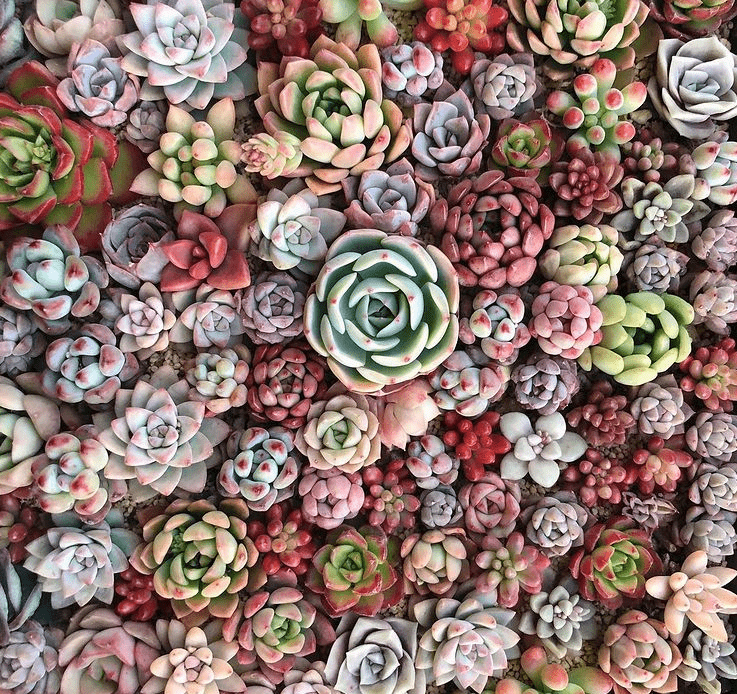
Echeveria datasheet
Echeveria is a large genus of flowering succulents belonging to the Crassulaceae family. Echeverias are native to semi-desert areas of Texas, Central America and Mexico. This genus includes more than 150 species and named on the Mexican botanical artist name “Atanasio Echeverria y Godoy ”. The fleshy Echeveria leaves are generally arranged in beautiful rosettes.
Furthermore, these leaves can be linear, cylindrical, triangular, sometimes spatulate and their color cary from green to gray to purple or red. Also, some species are covered with hairs and others with a waxy layer. In addition, Echeveria plants bloom in summer and give bell-shaped flowers, solitary or in clusters, of red, orange, yellow or white color.
Moreover, Echeverias are very hardy and tolerant plants, so they can be grown outdoors or indoors to give a gorgeous touch to our gardens, balconies and homes. They are widely used indoors and outdoors, firstly because of their charming appearance then, because they are easy to grow and to care for and small enough to beautify small interiors.
Find out in this article how to grow and care for these plants and also some beautiful Echeveria species with their specific characteristics!
How to propagate Echeverias?
Propagating Echeveria is an easy and fun way to create new plants. Thus, the easiest propagation method is leaf cuttings in the sand during summer. Stem cuttings can also work very well. Moreover, Echeverias produce small offsets at the base of the stems which can be replanted because they root easily. So, you can simply take an offset, put it in a suitable substrate (potting soil, sand and compost) and put the pot in the right growing conditions.
How to care for Echeveria plants?
Visit the link below for more details:
Echeveria types
1- Echeveria affinis
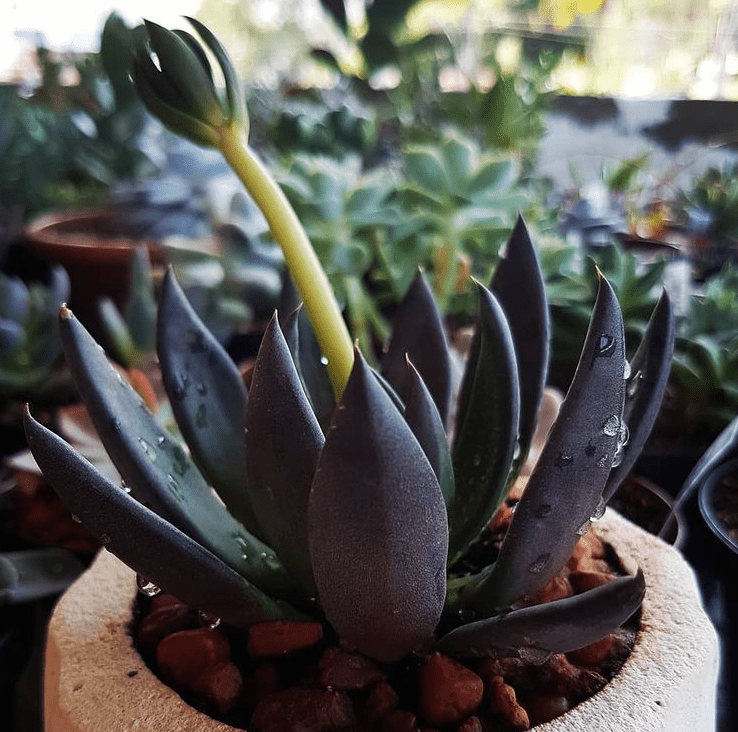
E. affinis, named commonly Black Echeveria, is a low-growing succulent that can reach around 15 cm tall and about 15 cm in diameter. Also, this plant has a rosette of dark-chocolate, almost black, sharp leaves. During the spring, they produce wonderful star-shaped, deep red flowers. Also, this plant prefers full sun, or partial shade with free-draining soil or compost and suits for indoors and outdoors planting. Echeveria Black knight, which is an E. affinis variety, is one of the darkest varieties of the whole genus.
2- Echeveria agavoides

E. agavoides, or Lipstick Echeveria, is a sub-tropical perennial succulent native to Mexico. This small species, resembling Agave, has a rosette of waxy, triangle-shaped, pale-green leaves with red edges (the color intensity varies according to the exposure to the sun). Then, during spring and early summer, this stemless plant produces wonderful yellow, lantern-shaped flowers with red tips. Moreover, this succulent plant is very variable in habitat and several cultivars or selections are recognized. It is also vigorous and very easy to grow and much used in hybridizing.
3- Echeveria black prince
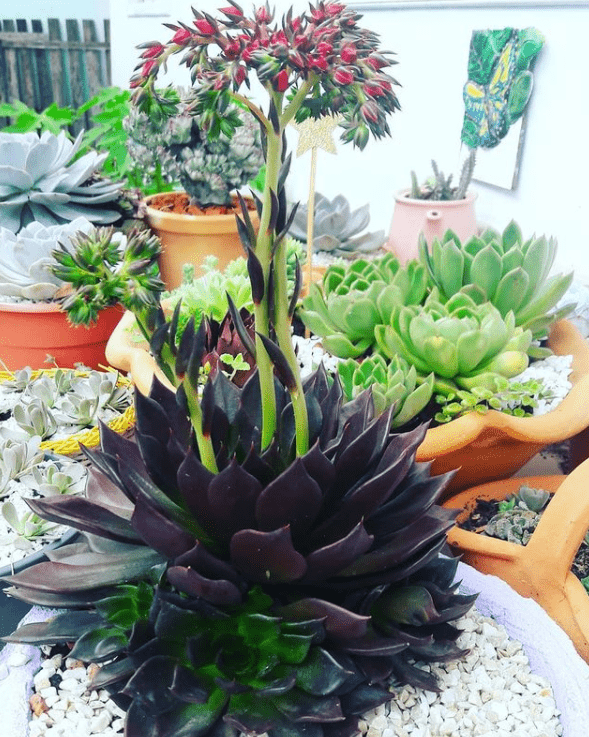
E. black prince, named also Black Hens and Chicks, is an attractive slow-growing succulent in the Crassulalceae family. It is a hybrid of two plants: E. shaviana and E. affinis. This beautiful species produces clumps of short rosettes that can reach 8 cm and have yellowish-green center. The unique leaves are fleshy, dark green, purplish and almost black with yellowish tips. In late autumn to winter, this gorgeous plant produces dark red flowers on short stalks.
4- Echeveria blue bird
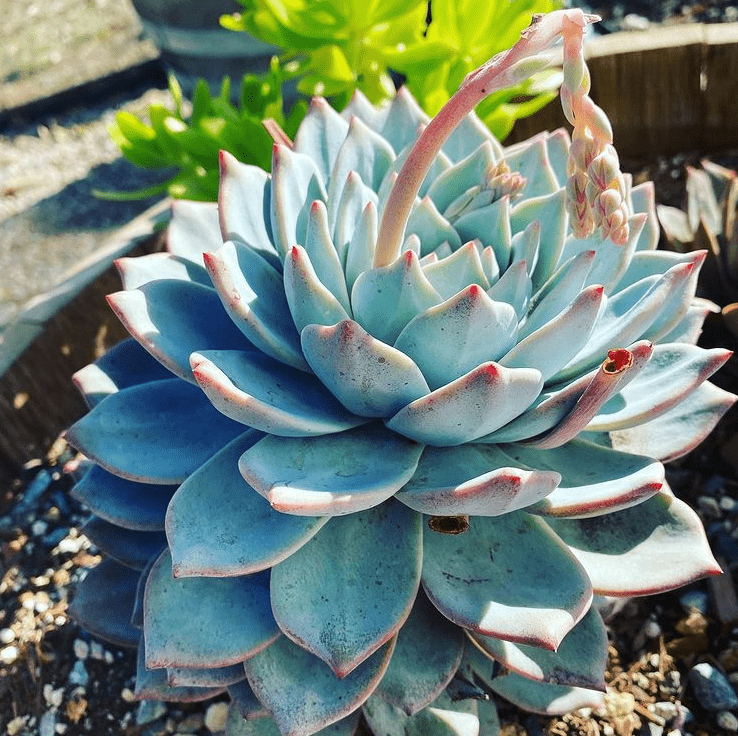
E. ‘Blue Bird’ is a perennial plant belonging to the Crassulaceae family. It is a rosette-shaped succulent with dusty blue-grey leaves with red-pink tints and powdery coating. The flowers are pinkish-orange, bell-shaped and born on slender stalks in early summer. In addition, this beautiful species is easy to grow and produces offsets freely making it an ideal plant for people who enjoy propagating succulents.
5- Echeveria”can can”
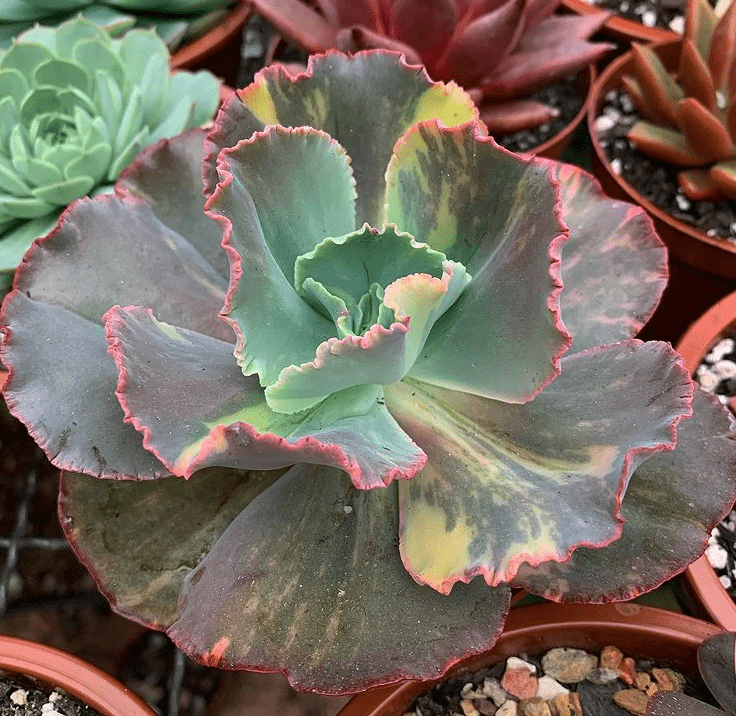
Echeveria “can can” is an Echeveria hybrid with unknown parentage. It is a large hybrid rosette 35 cm or more across, with thick-fleshy, stout leaves arranged in a perfect circle. The leaves change the color from copper-green to brown-violet when older. During summer, reddish-pink flowers are produced.
6- Echeveria derenbergii
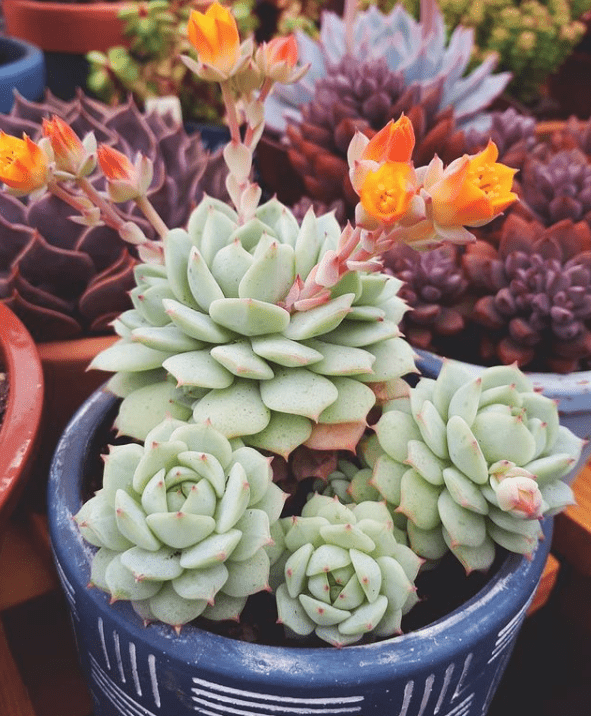
Echeveria Derenbergii, commonly known as Painted Lady or Baby Echeveria, is a perennial member of the Crassulaceae family. It is an evergreen succulent forming small basal rosettes of triangular-shaped and whitish-green leaves with red-pinkish edges. This plant produces bell-shaped and yellow flowers with red tips, then follicles. Moreover, this species is rather an indoor plant because it doesn’t tolerate winter humidity.
7- Echeveria elegans
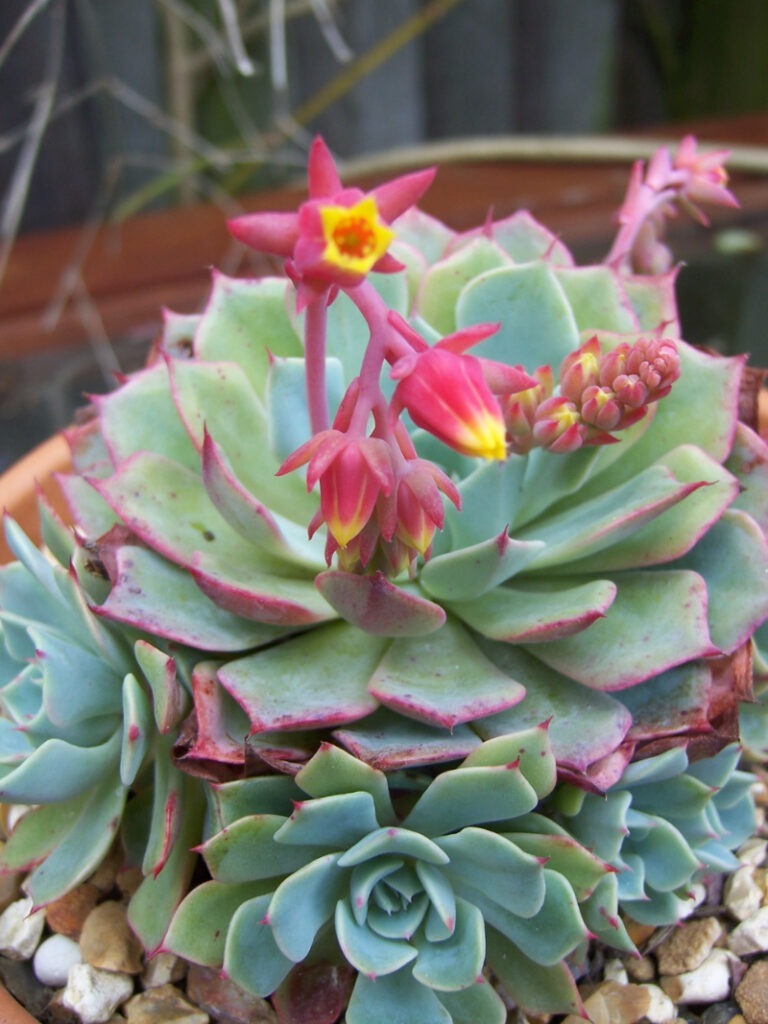
Echeveria elegans, commonly named Mexican snowball or White Mexican rose, is an evergreen succulent and one of the most easily recognizable Echeverias. It has compact rosettes of fleshy, spoon-shaped leaves with a color varying from light, silvery-green to a light purplish shade. Pink flowers with yellow tips appear during winter and spring on long, slender, pink stalks of almost 30 cm. Indeed, this species requires very little watering and needs warm temperatures, dry, well-drained soil to keep its rosettes compact.
8- Echeveria fabiola
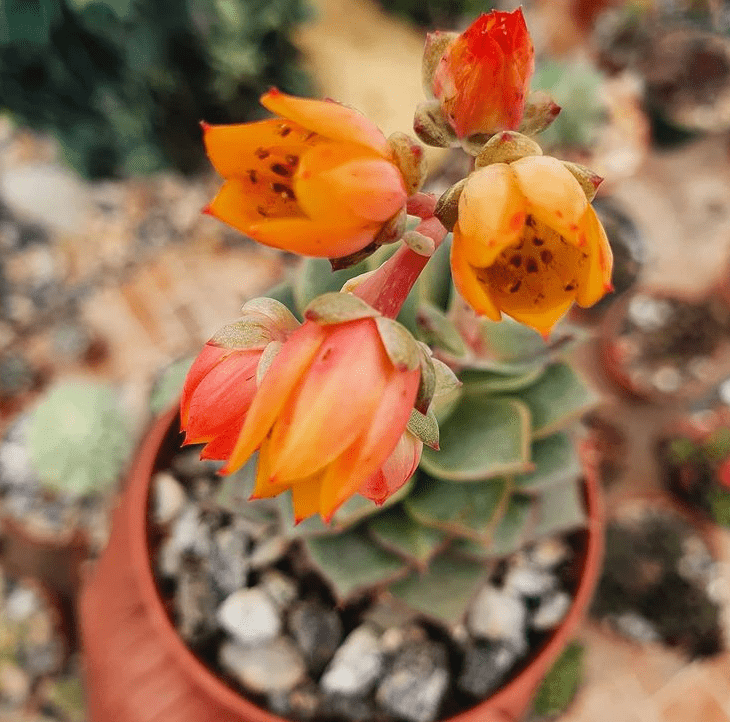
Echeveria fabiola is a perennial member of the Crassulaceae family and it is a hybrid between Echeveria Purpusorum and Echeveria derenbergii. It is a rosette-shaped succulent with thick, green leaves tipped in red. The red-orange flowers appear on the top of reddish stems of about 15 cm. This species also needs sunlight to maintain its colors and compact rosette form.
9- Echeveria imbricata
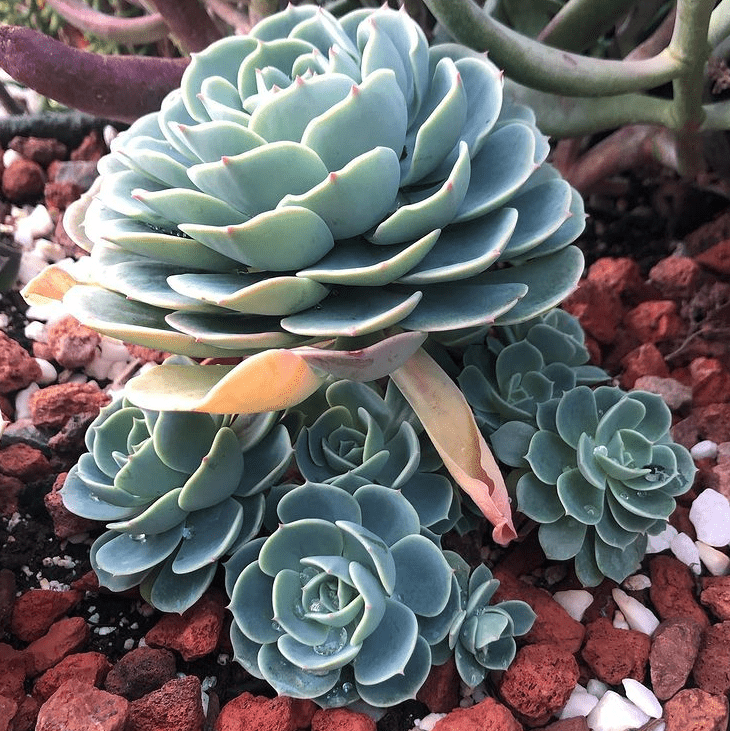
Echeveria imbricata, known also as Blue Rose Echeveria, is one of the oldest succulent varieties around the world. It is a hybrid of Echeveria glauca and Echeveria metallica. This beautiful species produces rosettes of flat, blue-green leaves with pink around the edges. During spring or early summer, this flowering succulent produces several loose clusters of small, orange-red, bell-shaped flowers. This Echeveria species is a great choice for rock gardens or containers.
10- Echeveria laui
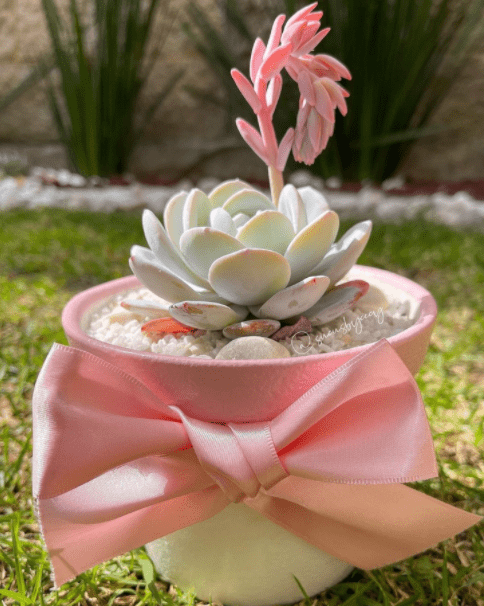
Echeveria laui is a perennial member of the Crassulaceae family, native to Mexico. This succulent plant forms a rosette of round, white-glaucous and powdery leaves. It is among the most attractive Echeverias. It produces an inflorescence of 9 to 17 peachy-rose flowers that bloom from summer to autumn. Be very careful as the bloom is soft and easily damaged by the lightest touch.
11- Echeveria lilacina
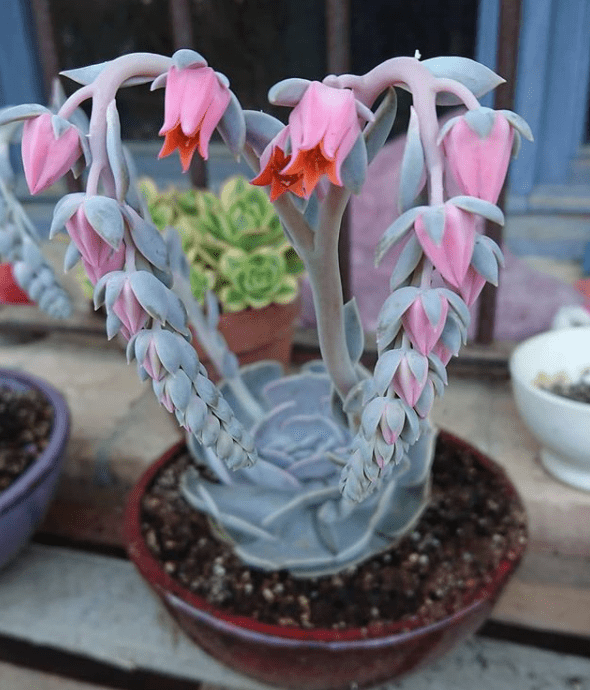
Echeveria lilacina, or Ghost Echeveria, is an attractive, slow-growing succulent of the Crassulaceae family. It is widespread on the Mediterranean coast and its rockeries. This beauty is named Ghost plant because of its amazing almost white foliage due to the bloom overing the leaves. However, the plant takes a beautiful pinkish or purple color if it has really good light. Early each spring, a rosette can produce tall bloom stalks from which hang delicate, pale pink flowers that beautifully complement the lilac rosette.
12- Echeveria lola
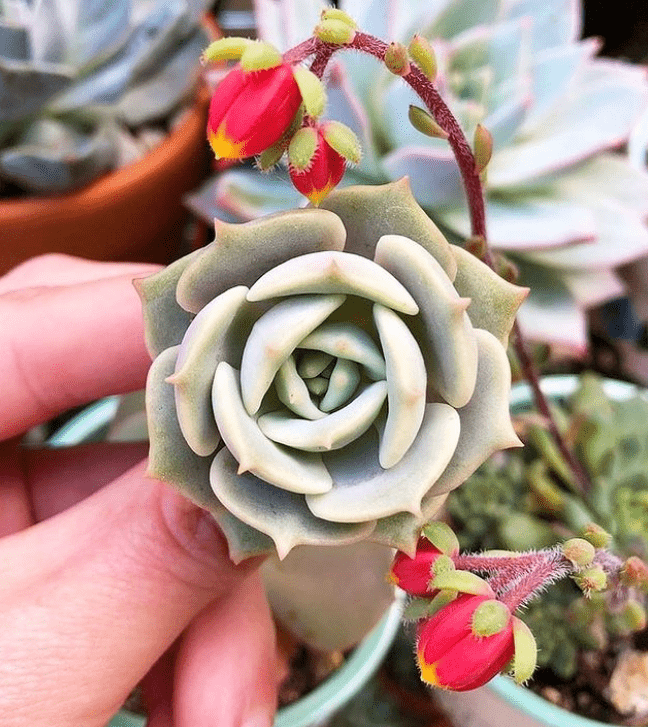
Echeveria lola is a gorgeous result of the cross E. lilacina x E. ‘Deresina’. It forms a sculpted rosette of fleshy leaves of a delicate shade of light purple to a mix of gray and blue hues. Also, The thick layer of epicuticular wax on the leaves gives the plant a special beauty. During spring, beautiful yellow, bell-shaped flowers appear on short stems.
13- Echeveria nodulosa
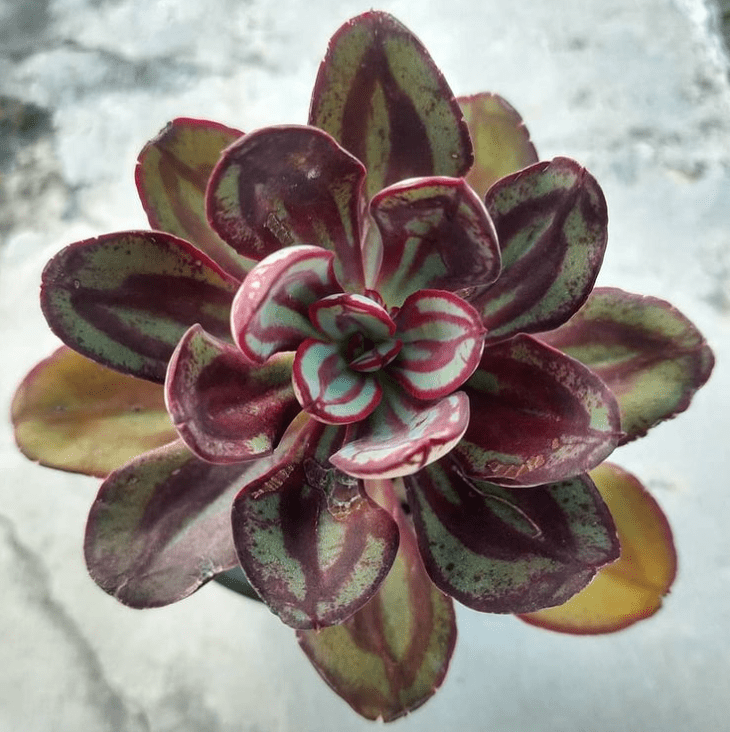
Echeveria nodulosa, commonly called Painted Echeveria, is a species of flowering plant in the Crassulaceae family. This species has erect, branching, sprawling stems which bear rosettes of fleshy, pointed, concave, olive-green leaves adorned with vivid red markings on both margins and mid-leaf. In addition, bell-shaped, yellow flowers with red markings appear on long stalks during spring or summers.
14- E. peacockii
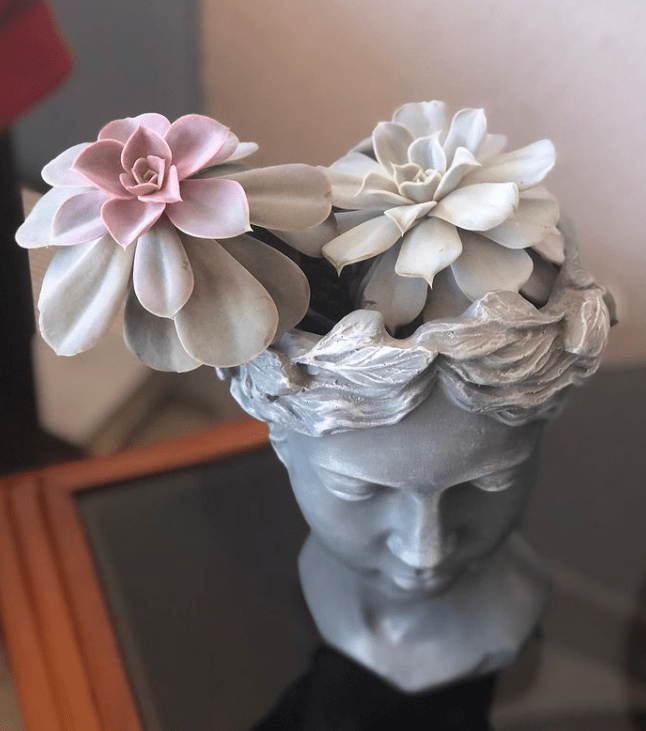
Echeveria peacockii, known also by Peacock Echeveria or Echeveria desmentiana, is a fast-growing succulent of the Crassulaceae family. This plant is characterized by rosettes of silver-blue leaves with pink to red tips. The leaves are slightly thinner than other Echeveria plants. Long-lasting, bell-shaped, coral flowers appear in early summer on slender stalks up to 25 cm long.
15- Echeveria pulidonis
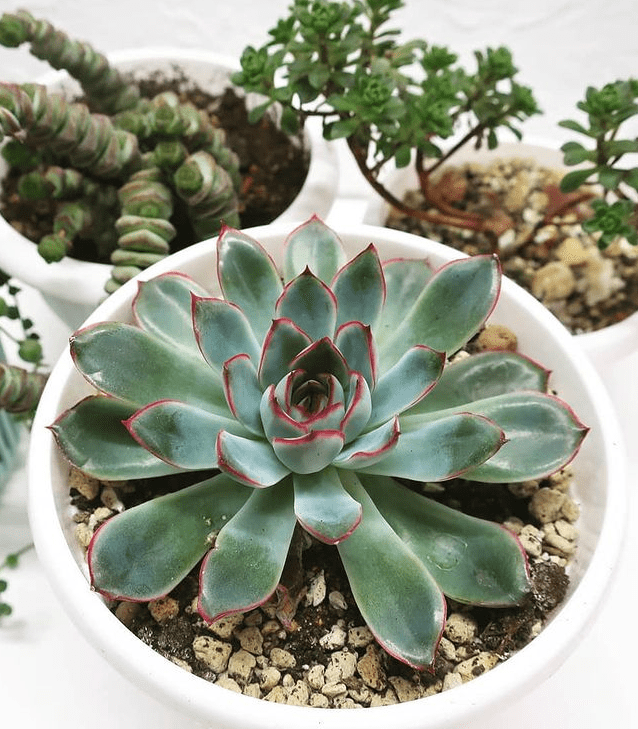
Echeveria pulidonis, commonly known as Pulido’s Echeveria, is a slow-growing, perennial member of the Crassulaceae family native to Mexico. This succulent plant forms a stemless rosette of thick, slightly cupped, bluish-green leaves with red edges. In spring, this plant produces bright, yellow flowers on reddish arching stalks.
16- Echeveria pulvinata
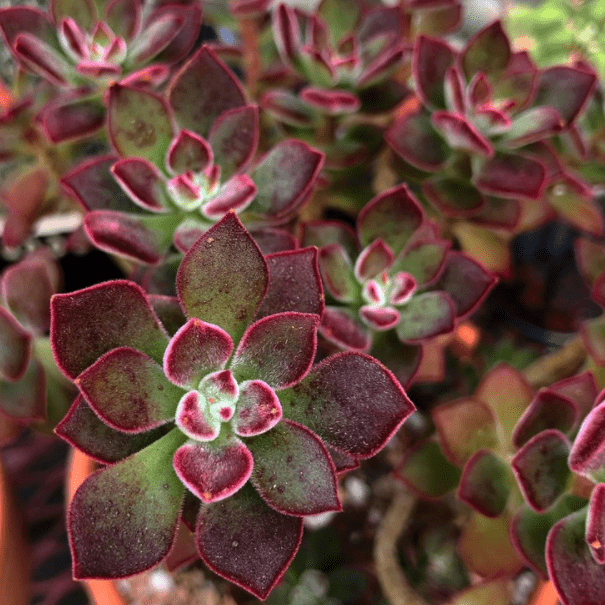
Echeveria pulvinata or Chenille Plant, is amongst the popular succulents hailing mainly from Oaxaca, Mexico. Small rosettes grow on small trunk-like stems and bear green leaves with pinkish-red edges. Moreover, the leaves, the young stems as well as the flower stalks are covered with white hairs that function to protect them from water loss. Bell-shaped, orange-red flowers appear late in the wintertime and continue into the spring. This species needs a lot of sunlight to remain beautiful, compact and colorful. This species includes many attractive varieties such as E. pulvinata frosty, E. pulvinata ruby and E. pulvinata devotion.
17- Echeveria rainbow
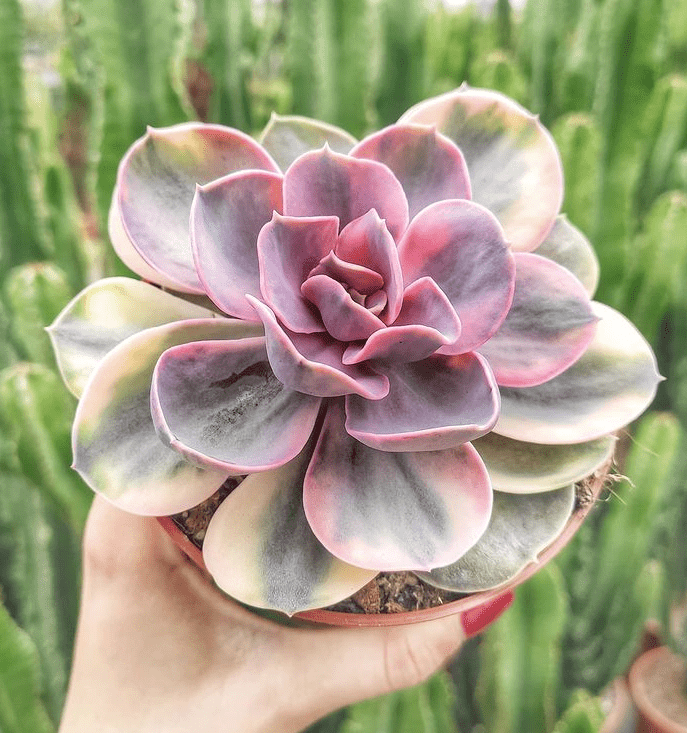
Echeveria rainbow is a stunning variegated cultivar of Echeveria ‘Perle Von Nürnberg’. This Echeveria plant has an attractive, colorful rosette that changes the color with seasons. This plant also has beautiful looking leaves that are broad, fleshy, yellow on the outside and purple to brownish in the middle.
18- Echeveria raindrops
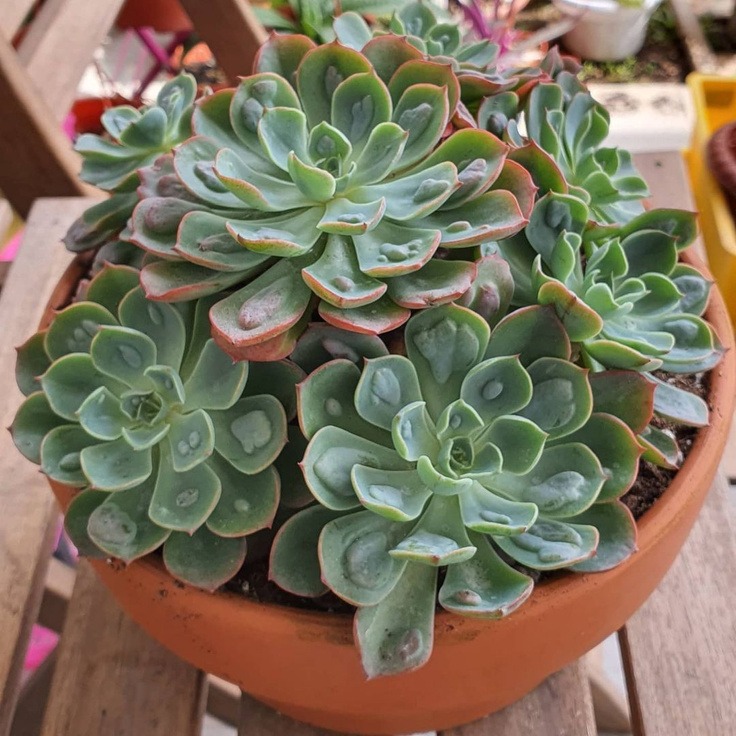
Echeveria raindrops, also known as Teardrops, is a popular rare succulent of the Crassulaceae family. This small plant forms wonderful rosettes of pale green, rounded leaves with reddish margins. Moreover, a globular pale-green bump in the middle of each leaf appears and develops with age. These bumps, similar to a water droplet, are what give this unique plant its name. Also, the bumps and tips of the leaves can turn pink or red in cold weather and bright light.
19- Echeveria setosa
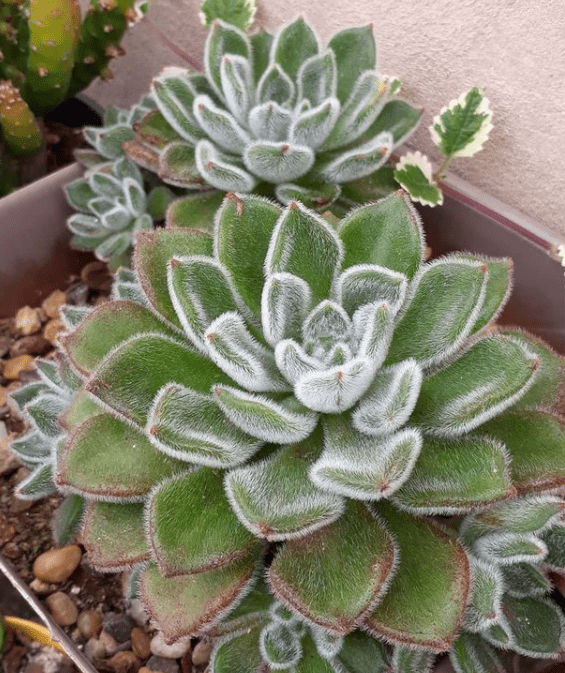
Echeveria setosa, also known as Mexican Firecracker, is an evergreen succulent of the Crassulaceae family. This species has stemless rosettes of spoon-shaped, mid-green leaves covered with remarkable, dense, white hairs. Then, from late-spring, urn-shaped, red flowers with yellow tips are borne on tall stems.
20- Echeveria shaviana
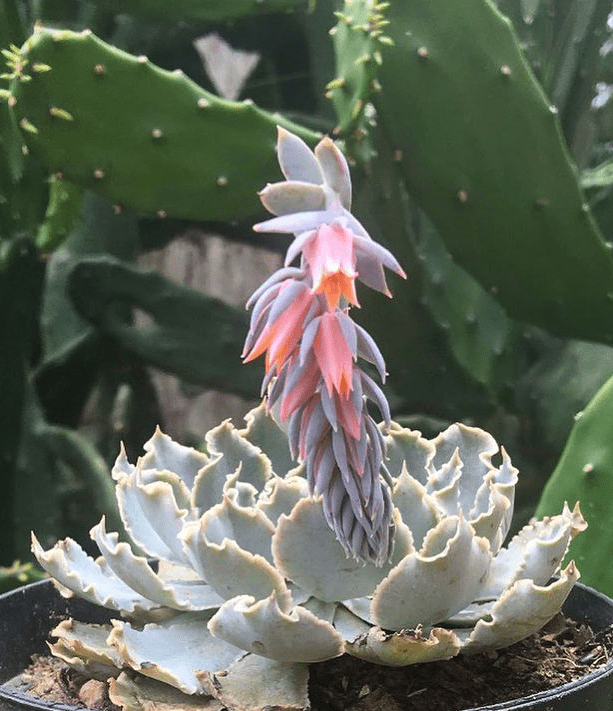
Echeveria shaviana, knowns also as Mexican Hens, is an attractive succulent native to mountain areas of Nuevo Leon in northern Mexico, where it grows in shaded areas in pine-needles on boulders. This plant has short stems bearing rosettes of fleshy, smooth, very wavy crinkled, blue-gray leaves that can flush pink in bright sunlight. The leaves have also a powdery coating of natural wax (farina). In summer, stalks of pink flowers with yellow inside appear to complete the attractive appearance of the plant.
21- Echeveria strictiflora
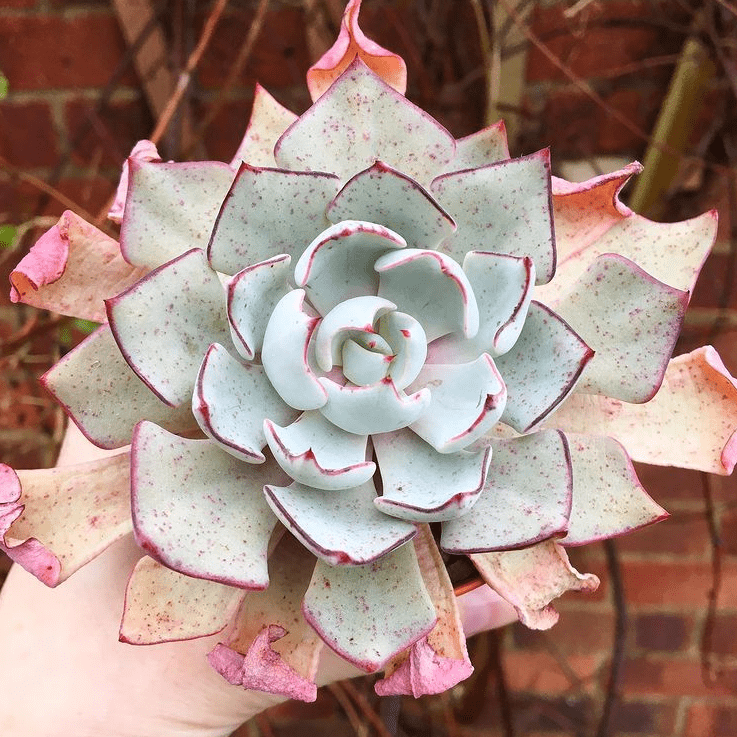
Echeveria strictiflora or Desert savior is a flowering succulent that comes from Mexico and Texas. It is the only E. native to the United States. Furthermore, this Echeveria succulent forms rosettes of broad, spathulate, fleshy, pale to greyish-green leaves with red margins. Then, in summer, we can see beautiful flowers which are rose near the base, yellowish-red above and orange inside.
Did you find this helpful? Share it with your friends!